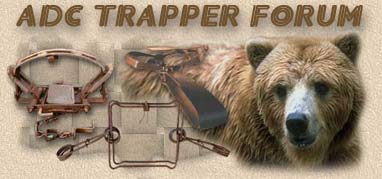I have not had a chance to.use the Comstock wire trigger so I am not really sure if its a better fit for ADC work.
_________________________
The main difference in the wire trigger trap is the trigger and how it works. The Comstock trigger is made so as to fire back ward or foreword. Trigger travel is the key to how far the animal is in the trap before it fires on most wire trigger traps.
If I am not mistaken most of the comstocks have a trigger travel of about 2.5 to 3" or more before the trap fires.
In our traps "Advanced Trap" with a standard trigger it is about 1 and 1/2" to 2". We now offer a BMI trigger that holds up well and can be fired just by bumping or moving about 1/2". On the new small double doors replacing or exchanging triggers is easier. All traps can come with what trigger you want.
When catching animals in a baited situation sometimes they reach in after the bait and grab the trigger backing out. The further the trigger travel the more likely the miss. In a short double doored trap catching a large animal for the sized trap, the longer the trigger travel you want. But in the short traps you are targeting just that, a shorter smaller animal, limiting what goes through the trap or what will go through the trap, even how the trap can be baited and used. Like a 1 1/2 victor for coyotes. You can catch them but a bigger trap is better in most cases.
We offer on the small double door traps a larger basic size than a Comstock, 10"x12" So they are a little more expensive to make than a smaller trap. We make that size because that is what I have found to be the most productive size for most large coon in a none forced set.
The new models have the mechanism on the outside like my swim thru's. They are just more open appearing to the animal, easier to set, easier to remove animals, and easier to adjust and replace triggers. They can easily be stacked by placing on their side.
With a four way trigger, the trigger is more sensitive thus requiring less wire coverage over the cage area. It essentially allows for a more open appearing trap to the animal.
In comstocks demo at the NTA he shows how stable his trap is by throwing the trap in the water and it not firing. To a novice that doesn,t under stand how a trigger works, it is impressive. His trigger moves back and forth not sideways to fire. Throwing cross ways to the water won,t push the wires backward or foreword to fire. So it is more stable in that scenario, but is that best in most situations.
When catching otters, cats, or small coons, they like to avoid wires. Maybe a four way trigger may have an advantage. So having a trigger option may be an advantage.
By having no internal parts getting an animal to enter is easier and virtually no obstruction to hinder entry. The trap is just much more open. On the other hand depending on the set, internal parts might be an advantage especially on forced sets in tight places.
We (Advanced Trap) have the ability to do both, but have concentrated on what we sell the most, because we are small and growing.



![[Linked Image]](8a3gq5-1.jpg)

